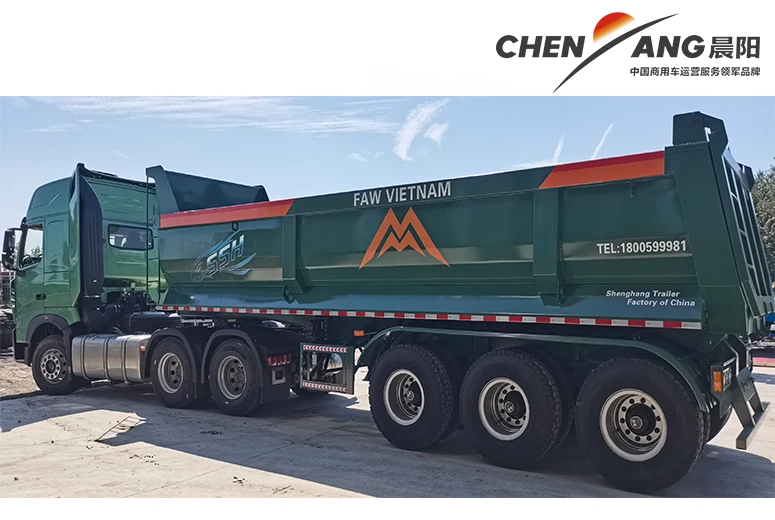engine connecting rod
Understanding Engine Connecting Rods The Unsung Heroes of Engine Performance
The engine connecting rod may not be the most glamorous component of a vehicle's engine, but it plays a critical role in ensuring the proper functioning and performance of the engine. Often overlooked amidst the intricate design of an internal combustion engine, connecting rods serve as the bridge between the pistons and the crankshaft, transferring the force generated by combustion into rotational power.
What is a Connecting Rod?
A connecting rod, often referred to simply as a con rod, is a vital component in internal combustion engines. It connects the piston to the crankshaft, enabling the conversion of linear motion produced by the piston's movement into rotational motion that powers the vehicle. Typically made from strong materials such as forged steel or aluminum alloy, connecting rods are designed to withstand immense forces and high temperatures during operation.
The Role of Connecting Rods
Connecting rods serve several essential functions within an engine
1. Force Transfer When the air-fuel mixture ignites in the combustion chamber, it creates a high-pressure gas that drives the piston down. The connecting rod transmits this force to the crankshaft, initiating its rotation.
2. Alignment The rod maintains the proper alignment between the piston and crankshaft, allowing for smooth motion. An improperly aligned rod can result in increased wear and tear, leading to engine failure.
3. Weight The weight of the connecting rod affects engine performance. Lightweight materials allow for quicker acceleration and improve overall responsiveness. As a result, many manufacturers are gravitating towards materials like titanium and advanced composites to decrease weight while maintaining strength.
engine connecting rod

Types of Connecting Rods
There are primarily two types of connecting rods used in engines I-beam and H-beam.
- I-Beam Rods Known for their simplicity and strength, I-beam rods feature a design similar to the letter I, providing excellent structural integrity while reducing weight. They are commonly used in performance applications due to their efficiency in handling high RPMs and power outputs.
- H-Beam Rods H-beam rods resemble the letter H and are typically stronger than their I-beam counterparts. These rods are favored in high-performance engines that generate significant power and torque, making them suitable for racing applications.
Common Issues
Connecting rods are subjected to extreme stresses and can experience several issues over time. One of the most critical problems is rod failure, which can occur due to fatigue caused by high RPMs or excessive load. When a connecting rod fails, it can lead to catastrophic engine damage, often requiring a complete engine rebuild or replacement.
Another common issue is bending of the connecting rod, which can happen due to improper installation or excessive load. Bent rods can affect the engine’s performance and efficiency, leading to reduced power and increased fuel consumption.
Conclusion
In summary, connecting rods may not steal the spotlight in discussions about engine components, but they are undeniably crucial for the performance and reliability of internal combustion engines. Their ability to effectively convert linear motion to rotational force ensures that vehicles can deliver the power and efficiency drivers expect. As automotive technology advances, continuing improvements in materials and manufacturing processes for connecting rods will likely play a significant role in enhancing the performance and durability of modern engines. Understanding these unsung heroes of the engine can help vehicle owners appreciate the intricacies of their machines, ensuring they maintain them properly for optimal performance. Whether for daily commuting, off-roading, or competitive racing, the connection provided by these rods is what keeps the engine—and the journey—running smoothly.
-
SINOTRUK HOWO 84 Electric Dump Truck for Eco-Friendly Heavy HaulingNewsJul.26,2025
-
The Fast 16-Gear Manual Transmission Assembly for Heavy TrucksNewsJul.25,2025
-
Mercedes Benz Actros 1848 42 Tractor Truck for Sale - Reliable PerformanceNewsJul.24,2025
-
High-Quality Water Pump Assembly for Sinotruk Trucks – Durable & ReliableNewsJul.23,2025
-
Premium Truck Engine Antifreeze Coolant Fluid for Heavy Duty VehiclesNewsJul.22,2025
-
FOTON View G7 Mini Bus: Affordable & Spacious TransportNewsJul.22,2025
Popular products

























